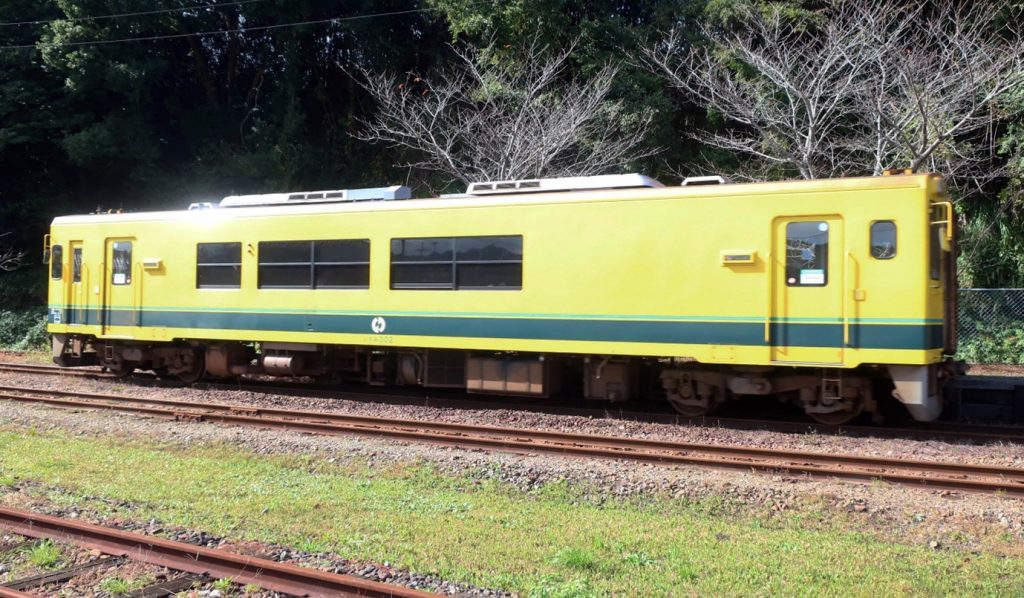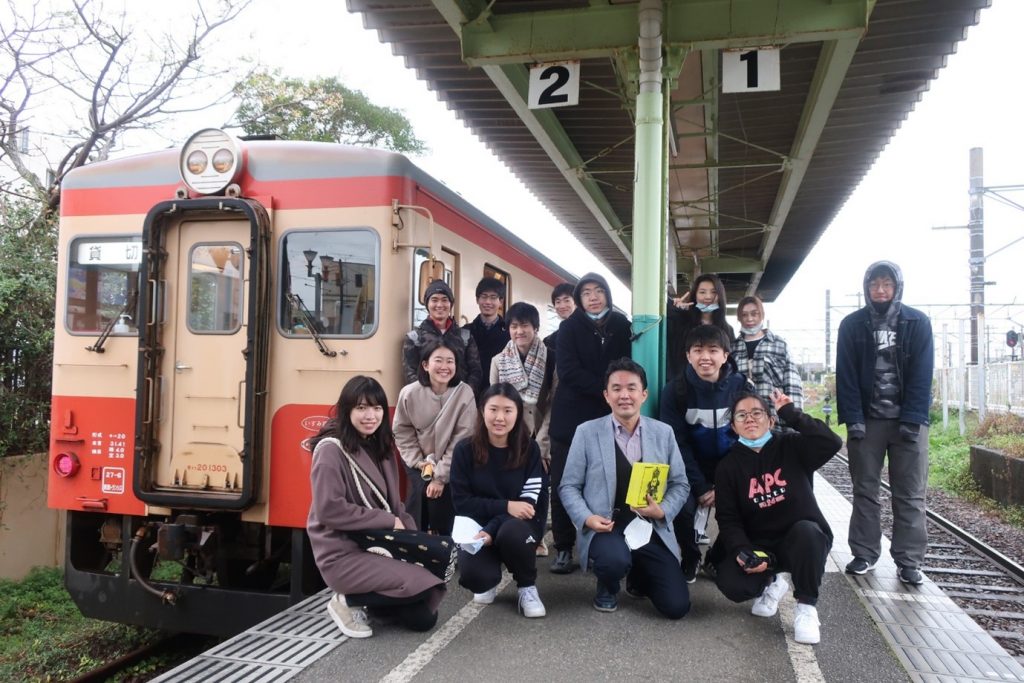【下記の日本語訳をご参照ください】
Lead Researchers and authors: Prof Shinya Hanaoka, Xin Guo, Akari Nosaka, Tokyo Institute of Technology, Hanaoka Research Group, School of Environment and Society, Department of Transdisciplinary Science and Engineering; Nathan Cohen, Tokyo Institute of Technology WRHI Visiting Professor; Central Saint martins, University of the Arts London.
FULL TITLE: Olfaction and its impact on train travellers well-being in Japan, a transdisciplinary collaborative research project integrating art, science and technology.
Following discussions in 2019 resulting from a presentation made at the ‘Colloquium with Central Saint Martins @ Tokyo Tech’ (14 May) a research project has developed led by Nathan Cohen and Shinya Hanaoka, with students attending the Hanaoka Research Group, Xin Guo and Akari Nosaka. This commenced in October 2019, as an olfactory project investigating the impact of odour on train passengers sense of well-being, with Xin Guo undertaking a supervised literature review. Over the duration of the research to date we have been investigating how smell influences our impression of the environment with a view to understanding if a heightened sense of well-being could be induced in passengers on public transport, particularly at times of stress, through the subtle introduction of certain odours.

We are also interested in how smell can be used to positively enhance the experience and recollection of different aspects of making a particular journey, from the purchasing of a ticket, through travel to associations with particular places – an assisted form of auto-performative olfactory and culturally curated experience, both practical and aesthetic, which may be of interest to passengers and train companies in promoting travel as a healthy experience that could also enhance well-being and for purposes of tourism.
This complements research previously undertaken by Nathan Cohen collaboratively with the Japanese artist Reiko Kubota, along with others researching this, into the field of olfaction, memory and narrative,* with a view to establishing how the well-being benefits of olfaction can be adapted to a larger scale. Shinya Hanaoka expressed an interest in this in the context of public transport, a field in which he has expertise. For both of us this research opens up new possibilities for investigation in ways that we have not previously had the opportunity to explore.
The literature review did reveal some studies looking at different aspects of passenger response to train travel although there was relatively little published that covered the specific aspects in relation to olfaction that we are interested in investigating. There is, however, more literature available relating to personal response to different odour types, and this helped to inform the choices made regarding which odours to test and the methods that should be used to do this.
In the Spring of 2020 Shinya Hanaoka approached a couple of train companies in Japan and the Isumi Railway Company in Chiba agreed to our conducting an experiment aboard one of their trains. This company runs a small railway line between Ohara and Kazusa-Nakano which provides for local transport needs and tourism, the journey running through the Boso peninsula known locally for its beautiful landscape. During the tourist season the company also offers gastronomic train journeys attracting visitors from within Japan and abroad, particularly during the Spring and early Summer flowering season.
Consequently, we devised an experiment where passenger response to odour on a train could be tested. This would enable us to test 2 odours and how they impacted travellers on 2 timed round trip journeys between Ohara to Otaki stations. Two hypothesise were being tested relating to the idea that a pleasant ambient smell on the train would (1) induce a change in railway users emotional response and that (2) it would influence their perception of the environment in which they were travelling, leading overall to an enhanced sense of well-being.

A questionnaire had to be devised to be completed by each traveller for each of the journeys they made with the different odours and also without an odour being introduced that would enable statistical analysis of participants responses. Led by Xin Guo, assisted by Akari Nosaka, 23 students from Tokyo Institute of Technology volunteered to participate in the experiment and questionnaire forms were completed on December 2nd 2020 when the main experiment took place, following an initial test in November.
The questionnaire was based on established psychological test methods. The first hypothesis, related to pleasure and arousal of emotion, was tested using the PAD Model (Mehrabian and Russell, 1974) and Russell’s Circumplex Model (Russell, 1980), adapted for use in Japan with a revised translation (任,井上 2018). The second hypothesis, perception of the train carriage environment, was tested by including an updated version of the Semantic Differential technique (SD method) (Osgood et al., 1957). Participants were asked to record their perceptions using a Visual Analogue Scale.^
Advice on the questionnaire preparation and experimental methodology was also provided by Associate Prof Mitsue Nagamine (Tokyo Institute of Technology, Nagamine Lab), and Prof Takefumi Kobayashi (Bunkyo Gakuin University). Prof Satomi Kunieda (Ritsumeikan University) also advised on the selection of the odour samples used in the experiment, which were distributed in the train carriage using fans.

While this was an initial test with 23 participants, we did learn that, for the majority of those taking part in the experiment, there was a measurable increase in their sense of well-being when exposed to both odour samples, Lavender and Lemon (citrus), compared to when travelling without an odour sample present.†
We are now entering the next stage of the research (April 2021 – March 2022) to establish how different olfactory sources enhance train passenger experience, and how this may also relate to tourism. Nathan Cohen, together with the team from the Hanaoka Research Group, will also be investigating the use of olfaction and the ways this can be developed and applied aesthetically to create memorable user train journeys.
*For details of this research please visit this website: www.olfactoryresearch.net/research
^Xin Guo has now graduated with a Master’s thesis titled: The influence of odor in a train carriage upon positive emotional response in railway users (鉄道車両内の香りが利用者のポジティブ感情に与える影響), that describes the research undertaken for this project up to March 2021.
† This experiment was conducted under Covid-19 pandemic restrictions which meant numbers of participants were restricted, so results should be interpreted accordingly.

S T A D H I – Science & Technology + Art & Design Hybrid Innovation
This research is supported by the Tokyo Tech World Research Hub Initiative (WRHI), School of Environment and Society, Department of Transdisciplinary Science and Engineering, Tokyo Institute of Technology.
© 2021 Photographs and intellectual content – all rights reserved by the authors.
嗅覚とその日本の電車旅行者の幸福への影響
「東京工業大学でのセントラル・セント・マーティンズ校とのコロキアム」 (https://www.tse.ens.titech.ac.jp/~deepmode/csm/blog/%e5%a0%b1%e5%91%8a%ef%bc%9a%ef%bc%92%ef%bc%90%ef%bc%91%ef%bc%99%e5%b9%b4%ef%bc%95%e6%9c%88%ef%bc%91%ef%bc%94%e6%97%a5%e3%81%ab%e3%82%bb%e3%83%b3%e3%83%88%e3%83%a9%e3%83%ab%e3%83%bb%e3%82%bb%e3%83%b3/)(5月14日)でのプレゼンテーションから発生した2019年の議論に続き、ネイサン・コーエン特定教授と花岡伸也教授が率いる研究プロジェクトが開始され、花岡研究室の郭欣と野坂朱里が参加しました。この研究は、香りが列車の乗客の幸福感に与える影響を調査する嗅覚プロジェクトとして2019年10月に開始し、郭欣が文献レビューを実施しました。これまでの研究期間中には、香りが環境の印象にどのように影響するかを調査してきました。特に、ストレスのある時に、特定の香りを導入することによって、公共交通機関の乗客に幸福感の高まりが誘発されるかどうかを理解するための調査を行っています。
今回の実験は2020年12月2日に23名が参加しました。場所は、千葉県の上総中野駅と大原駅を結ぶ小さな鉄道路線で、美しい景観で地元で有名な場所です。郭欣が主導したこの初期テストでは、実験に参加した大多数の人にとって、ラベンダーとレモン(柑橘類)の両方の香りにさらされたときに、香りがない状態と比べると、幸福感の増加が見られました*。
研究の次の段階では、嗅覚源が列車の乗客体験をどのように向上させるか、そしてこれが観光にどのように関係するかを確認します。ネイサン・コーエンは、花岡研究室と共に、嗅覚の使用とこれを美的に開発・適用して、思い出に残る列車の旅を作成する方法についても研究します。
*この研究の詳細についてはこちら(www.olfactoryresearch.net/research)